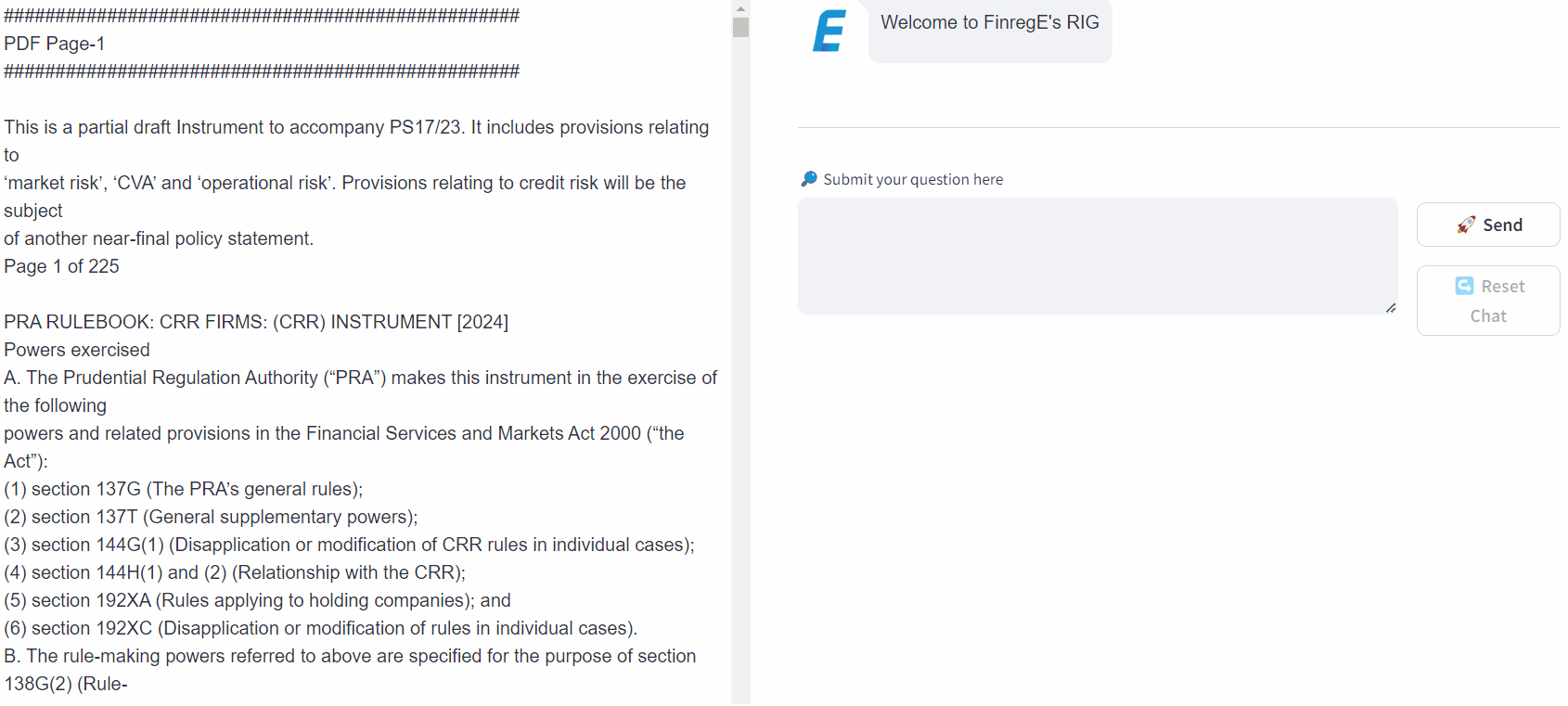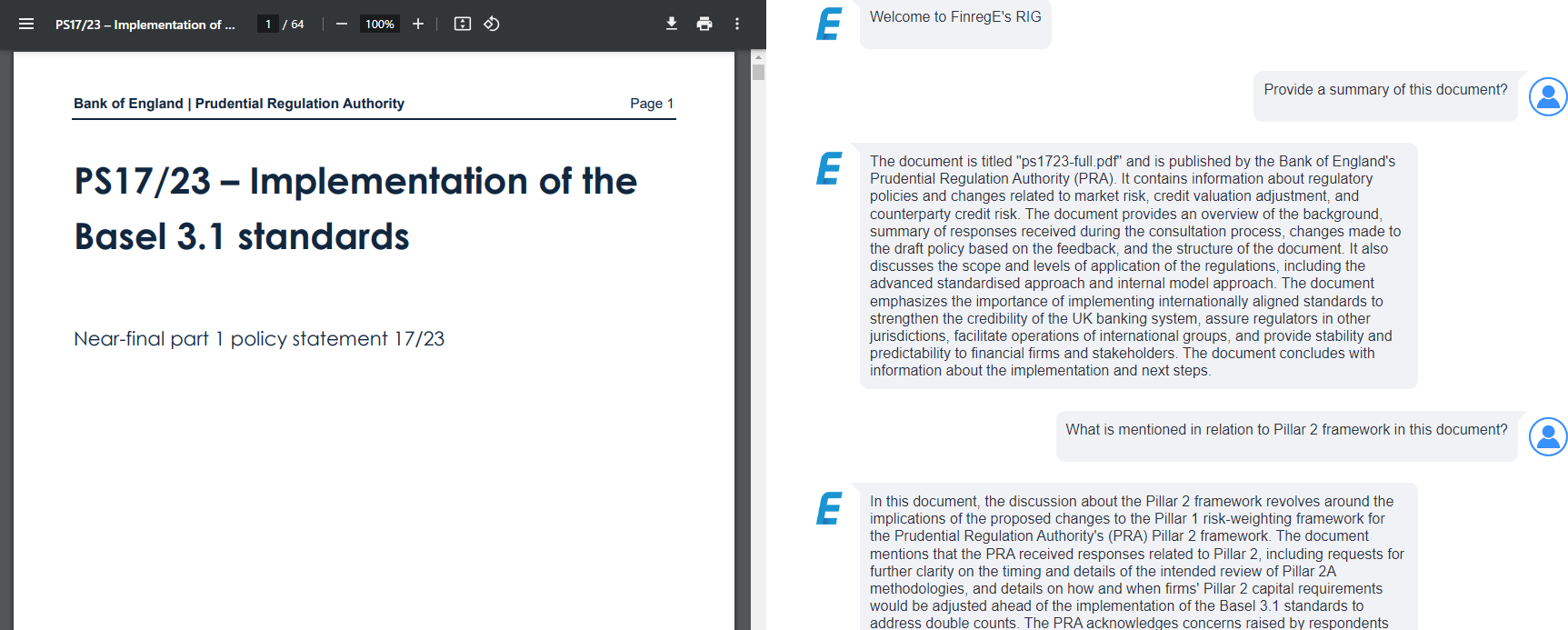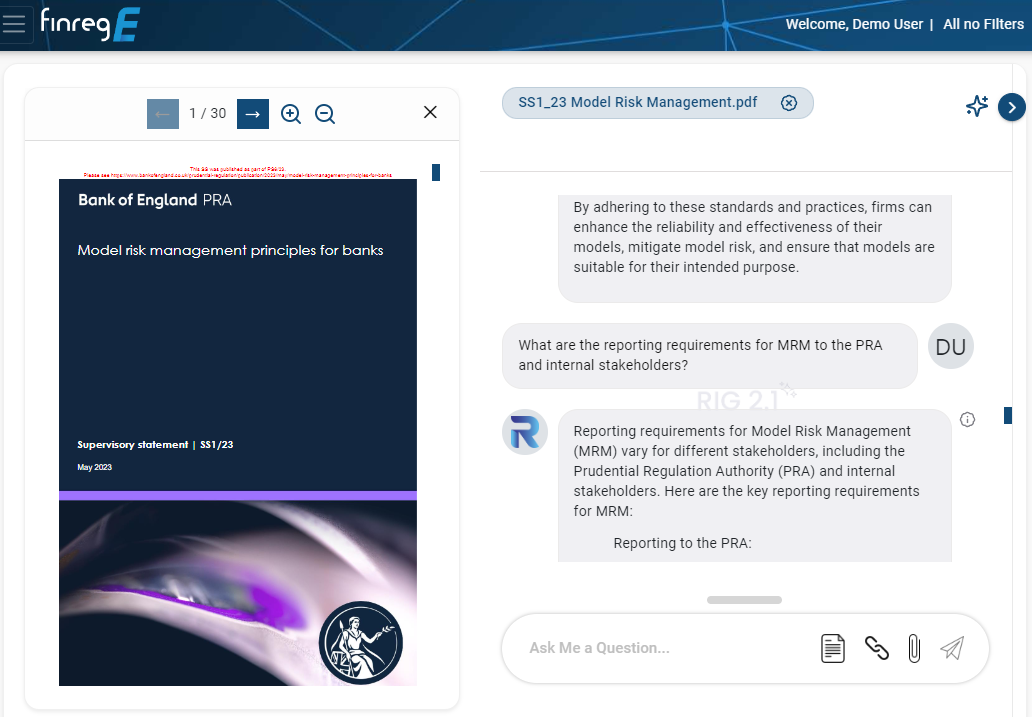The UK’s Prudential Regulation Authority (PRA) introduced the Basel III Reforms, also known as the Basel 3.1 standards, in November 2022. These reforms closely mirror the guidelines established by the Basel Committee on Banking Supervision (BCBS) and are designed to recalibrate risk-weighted assets (RWAs) and capital ratios, tailored to the unique characteristics of the UK financial market.
In December 2023, the PRA released the first part of its near-final Policy Statement (PS17/23), addressing critical areas such as Credit Valuation Adjustment (CVA), Counterparty Credit Risk (CCR), and Market Risk. The second part, covering Credit Risk and the Output Floor, is scheduled for release in Q2 2024, completing the regulatory response to the consultation process.
The PRA has adjusted its original proposals to address concerns raised by respondents, facilitate smoother policy implementation, enhance the UK’s attractiveness for internationally active firms, and improve the clarity of the rules.
Notable changes include the removal of market risk internal modelling for sovereign exposure default risk, aligning the market risk and credit risk frameworks, and introducing an optional transitional arrangement to provide flexibility in the credit valuation adjustment risk framework, reducing operational burdens on firms.
According to the PRA’s latest data, the impact of the Basel 3.1 requirements is expected to be relatively low, resulting in an average increase of around 3% in Tier 1 capital requirements for UK firms once fully implemented by 2030. This is lower than the estimates provided by the European Banking Authority (approximately 10% increase) and the US agencies (around 16% increase for CET1).
The near-final rules aim to promote effective competition by narrowing the gap between risk weights calculated under internal models and standardized approaches, support international competitiveness by aligning with global standards, and enhance the safety and soundness of regulated firms while ensuring capital ratios are more consistent and comparable.
The PRA plans to publish its second near-final policy statement in Q2 2024, covering the remaining elements of the Basel 3.1 package, including credit risk, the output floor, reporting, and disclosure requirements. The implementation of the Basel 3.1 standards is scheduled for July 1, 2025, with a 4.5-year transition period ending on January 1, 2030.
We asked our AI RIG to interpret near-final Policy Statement (PS17/23)
With the start of the 2nd quarter and PRA’s plan to publish the second near-final policy statement is just around the corner, we asked our AI RIG questions to understand the near-final Policy Statement (PS17/23), below are the results:
Annexure 2 of Policy Statement PS17/23
We asked our AI RIG to give us the new rules that are mentioned in Annexure 2 in relation to Market Risk, Credit Valuation Adjustment, Operational Risk, and Counterparty Credit Risk. We are happy to share the results:

Market Risk | Credit Valuation Adjustment | Operational Risk | Counterparty Credit Risk |
The new rules mentioned in this document in relation to market risk include the following:
1. Institutions are required to calculate the size of their on- and off-balance-sheet business that is subject to market risk using data as of the last day of each month.
2. Positions assigned to the trading book, except credit derivatives that are recognized as internal hedges against non-trading book credit risk exposures and credit derivative transactions that perfectly offset the market risk of the internal hedges, should be included in the calculation.
3. Non-trading book positions that are subject to foreign exchange risk or commodity risk should also be included.
4. All positions should be valued at their market values on the specified date, except for positions subject to foreign exchange risk or positions where the market value is not available, in which case a fair value or the most recent market value or fair value should be used.
5. Non-trading book positions subject to foreign exchange risk should be considered as an overall net foreign exchange position and valued in accordance with the Market Risk: Simplified Standardised Approach.
6. Non-trading book positions subject to commodity risk should be valued in accordance with the Market Risk: Simplified Standardised Approach.
7. The absolute value of long positions should be added to the absolute value of short positions.
These rules aim to ensure that institutions accurately calculate the size of their market risk exposures and value their positions appropriately. | Based on the information provided in the document, the new rules in relation to credit valuation adjustment (CVA) are outlined in Annex K of the document. The chapter content of Annex K includes the following sections:
1. APPLICATION AND DEFINITIONS: This section likely provides information on the scope and application of the CVA rules, as well as definitions of key terms related to CVA.
2. LEVEL OF APPLICATION: This section may specify the level at which the CVA rules apply, such as at the institution level or at the trading desk level.
3. GENERAL PROVISIONS: This section likely includes general provisions and requirements related to CVA, such as calculation methodologies, data requirements, and reporting obligations.
4. BASIC APPROACH: This section may outline the basic approach for calculating CVA, including the factors and parameters to be considered in the calculation.
5. STANDARDISED APPROACH: This section may provide an alternative approach for calculating CVA, which may be applicable to institutions that do not use internal models for risk assessment.
6. ALTERNATIVE APPROACH: This section may outline another alternative approach for calculating CVA, which may be applicable to specific types of institutions or trading desks.
7. TRANSITIONAL PROVISIONS: This section may include provisions for the transition from existing CVA rules to the new rules, including any timelines or requirements for implementation. | Based on the information provided in the document, the new rules in relation to operational risk are as follows:
1. Calculation of Operational Risk AVA: In cases where the operational risk relating to valuation processes is not fully accounted for by the Advanced Measurement Approach calculation, the institution shall calculate an operational risk AVA of 10% of the sum of the aggregated category level AVAs for market price uncertainty and close-out costs.
2. Inclusion of Losses in the Loss Data Set: The institution must include certain types of losses in the loss data set, including provisions or reserves accounted for in the profit and loss account against potential operational loss impact, losses stemming from operational risk events with a definitive financial impact temporarily booked in transitory and/or suspense accounts, and negative economic impacts booked in a financial accounting period due to operational risk events impacting the cash flows or financial statements of previous financial accounting periods.
3. Exclusion of Certain Items from the Gross Loss Computation: The institution must exclude certain items from the gross loss computation of the loss data set, including costs of general maintenance contracts on property, plant or equipment, internal or external expenditures to enhance the business after operational risk losses, and insurance premiums.
4. Business Indicator Range and Marginal Coefficients: The document provides a table specifying the business indicator range and marginal coefficients for operational risk. The business indicator range is divided into three buckets based on the value, and each bucket has a corresponding marginal coefficient.
5. Internal Loss Multiplier: The Internal Loss Multiplier is equal to one.
6. Policies and Processes: The institution must establish, implement, and maintain policies and processes to evaluate and manage its exposure to operational risk. This includes having an independent risk management function for operational risk, integrating the internal measurement system for operational risk into day-to-day risk management processes, implementing a system of reporting to senior management, conducting regular reviews of operational risk management processes, and ensuring that internal validation processes for operational risk management operate effectively.
| According to the document, the new rules in relation to counterparty credit risk are as follows:
1. Firms have the option to calculate their own funds requirement for counterparty credit risk using either the Counterparty Credit Risk (CRR) Part and the Credit Risk Mitigation (CRR) Part, or the Internal Model Method set out in Part Three, Title II, Chapter 6, Section 6 of CRR and the Credit Risk Mitigation (CRR) Part.
2. If a firm chooses to use the Internal Model Method, they must apply the alternative approach to their entire portfolio of covered transactions and not recognize the effect of Credit Valuation Adjustment (CVA) hedges.
3. Firms that opt for the alternative approach must notify the Prudential Regulation Authority (PRA) in writing that they meet the conditions prior to using the alternative approach.
4. There are transitional provisions in place until January 1, 2030, allowing firms to exclude certain counterparty credit risk transactions from their calculation of own funds requirements. These exclusions apply to transactions entered into prior to July 1, 2025, with specific counterparties, including non-financial counterparties as defined in Regulation (EU) No 648/2012 and counterparties referred to in Article 89 of Regulation (EU) No 648/2012.
It’s important to note that this information is based on the partial draft instrument accompanying PS17/23 and may be subject to change or further clarification in the final policy statement. |
.
Annexure 6 of Policy Statement PS17/23
In addition to the above annexure 2, a separate annexure was also published to understand the provisions in relation to interim capital regime and SDDT regime. Below are the results of the questions we asked our AI RIG

What is mentioned about SDDT and ICR in this document?
In this document, there is information provided about SDDT (Standardised Disclosures and Data Templates) and ICR (Interim Capital Regime).
Regarding SDDT, it is mentioned that there are criteria that need to be met by a firm in order to become an ICR firm. The firm must certify to the PRA (Prudential Regulation Authority) that it meets the SDDT criteria. If an ICR firm ceases to meet the SDDT criteria, it is required to notify the PRA within 14 days of no longer meeting the criteria.
As for ICR, it is defined as a UK bank or building society to which the PRA has given a waiver modifying the effect of a rule, making it an ICR firm. Similarly, an ICR consolidation entity is defined as a CRR (Capital Requirements Regulation) consolidation entity to which the PRA has given a waiver modifying the effect of a rule, making it an ICR consolidation entity.
Overall, the document provides information about the criteria and requirements for firms to become ICR firms and ICR consolidation entities, as well as the notification obligations if they no longer meet the SDDT criteria.
What are the requirements and procedures related to the SDDT and ICR regimes?
According to the document, the SDDT (Standardised Duration and Diversification Test) and ICR (Interim Capital Regime) regimes have certain requirements and procedures. Here are the details:
SDDT Criteria:
If a firm consents to a waiver modifying 4.1, it becomes an ICR firm and must certify to the PRA (Prudential Regulation Authority) that it meets the SDDT criteria.
The SDDT criteria are not explicitly mentioned in the document, so further information is required to understand the specific requirements of the SDDT criteria.
ICR Firm:
An ICR firm refers to a UK bank or building society that has been granted a waiver by the PRA, modifying the effect of a specific rule to become an ICR firm.
The specific rule that is modified is not mentioned in the document, so additional information is needed to determine the exact requirements for an ICR firm.
ICR Consolidation Entity:
An ICR consolidation entity refers to a CRR (Capital Requirements Regulation) consolidation entity that has been granted a waiver by the PRA, modifying the effect of a specific rule to become an ICR consolidation entity.
The specific rule that is modified is not specified in the document, so more information is necessary to understand the precise requirements for an ICR consolidation entity.
Notification Requirements:
If an ICR firm ceases to meet the SDDT criteria, it must notify the PRA within 14 days from the day it no longer meets the criteria.
If the SDDT consolidation criteria cease to be satisfied by an ICR consolidation entity, it must notify the PRA within 14 days from the day the criteria are no longer satisfied.
It is important to note that the document provided is a partial draft instrument, and further details may be included in the complete document or other related documents. To fully understand the requirements and procedures related to the SDDT and ICR regimes, it is recommended to refer to the complete and finalized policy statement (PS17/23) and any accompanying documents.
Contact FinregE today and see how or AI RIG can help you interpret complex regulations effortlessly to ensure adherence and drive operational excellence.


